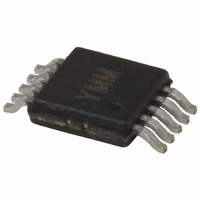MIC2174-1YMM Micrel Inc, MIC2174-1YMM Datasheet - Page 13

MIC2174-1YMM
Manufacturer Part Number
MIC2174-1YMM
Description
IC BUCK SYNC ADJ 25A 10MSOP
Manufacturer
Micrel Inc
Series
Hyper Speed Control™r
Type
Step-Down (Buck)r
Datasheet
1.MIC2174-1YMM.pdf
(27 pages)
Specifications of MIC2174-1YMM
Internal Switch(s)
No
Synchronous Rectifier
Yes
Number Of Outputs
1
Voltage - Output
0.8 ~ 5.5 V
Frequency - Switching
300kHz
Voltage - Input
3 ~ 5.5 V
Operating Temperature
-40°C ~ 125°C
Mounting Type
Surface Mount
Package / Case
10-MSOP, Micro10™, 10-uMAX, 10-uSOP
Power - Output
421mW
Primary Input Voltage
40V
No. Of Outputs
2
Output Current
25A
Voltage Regulator Case Style
MSOP
No. Of Pins
10
Operating Temperature Range
-40°C To +125°C
Svhc
No SVHC (15-Dec-2010)
Lead Free Status / RoHS Status
Lead free / RoHS Compliant
Current - Output
-
Lead Free Status / RoHS Status
Lead free / RoHS Compliant, Lead free / RoHS Compliant
Other names
576-3546-5
Available stocks
Company
Part Number
Manufacturer
Quantity
Price
Company:
Part Number:
MIC2174-1YMM
Manufacturer:
Micrel Inc
Quantity:
135
Micrel, Inc.
The circuit in Figure 4 illustrates the MIC2174/MIC2174C
current limiting circuit.
Using the typical V
value is roughly estimated as:
For designs where the current ripple is significant
compared to the load current I
operation, calculating the current limit I
into account that one is sensing the peak inductor
current and that there is a blanking delay of
approximately 150ns.
where:
V
t
ΔI
D = Duty Cycle
f
The MOSFET R
Therefore, it is recommended to add 50% margin to I
in the above equation to avoid false current limiting due
to an increased MOSFET junction temperature rise. It is
also recommended to connect the LX pin directly to the
drain of the low-side MOSFET to accurately sense the
MOSFETs R
DLY
SW
September 2010
OUT
L(pp)
Figure 4. MIC2174/MIC2174C Current Limiting Circuit
= Switching frequency
= Current limit blanking time, 150ns typical
= The output voltage
I
CL
= Inductor current ripple peak-to-peak value
=
R
130mV
DS(ON)
DS(ON)
ΔI
L(pp)
DS(ON)
.
+
CL
V
=
OUT
varies 30 to 40% with temperature.
value of 130mV, the current limit
I
V
CL
OUT
L
×
≈
f
t
SW
130mV
DLY
R
×
DS(ON)
(1
×
L
OUT
−
−
ΔI
D)
, or for low duty cycle
L(pp)
2
CL
should take
(3)
(4)
CL
13
MOSFET Gate Drive
The MIC2174/MIC2174C high-side drive circuit is
designed to switch an N-Channel MOSFET. The block
diagram of Figure 1 shows a bootstrap circuit, consisting
of D1 (a Schottky diode is recommended) and C
circuit supplies energy to the high-side drive circuit.
Capacitor C
is on, and the voltage on the LX pin is approximately 0V.
When the high-side MOSFET driver is turned on, energy
from C
side MOSFET turns on, the voltage on the LX pin
increases to approximately V
biased and C
high-side MOSFET on. The bias current of the high-side
driver is less than 10mA so a 0.1μF to 1μF is sufficient to
hold the gate voltage with minimal droop for the power
stroke (high-side switching) cycle, i.e. ΔBST = 10mA x
3.33μs/0.1μF = 333mV. When the low-side MOSFET is
turned back on, C
resistor R
slow down the turn-on time of the high-side N-channel
MOSFET.
The drive voltage is derived from the supply voltage V
The nominal low-side gate drive voltage is V
nominal high-side gate drive voltage is approximately V
– V
approximate 30ns delay between the high-side and low-
side driver transitions is used to prevent current from
simultaneously
MOSFETs.
DIODE
BST
, where V
G
is used to turn the MOSFET on. As the high-
, which is in series with C
BST
BST
is charged, while the low-side MOSFET
floats high while continuing to keep the
DIODE
flowing
BST
is recharged through D1. A small
is the voltage drop across D1. An
unimpeded
HSD
. Diode D1 is reversed
MIC2174/MIC2174C
BST
M9999-091310-C
, can be used to
through
IN
BST
and the
. This
both
IN
IN
.












